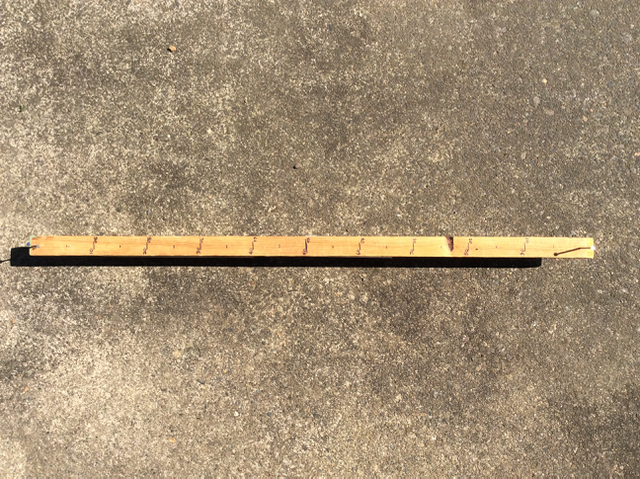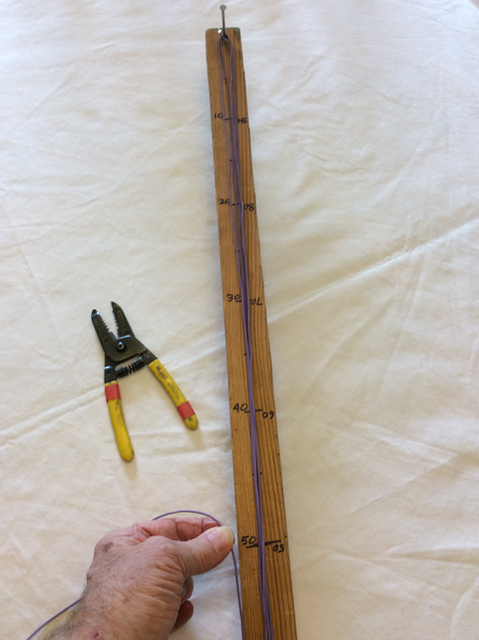Measuring Wire
This seems like a ridiculously trivial topic, but it is another one of those things that makes antenna building and experimenting much easier if you know the easy way to do it. And when you are using relatively light, flexible wire, the easy method is to use a wire measuring board.

Yes, it is that simple: two nails in a board a fixed distance apart, with markings between them. In this photo, I’m making a dipole for 20m, and cutting the wire to 5.5m. The nails are 1 m apart, with marks every 10 cm (running both directions) so I count 1 m each time I wrap around a nail, and then use the marks for the remainder. I can easily estimate the length to within 1 or 2 cm, even on a wire 10m or 20m long, and do so about as fast as I can unwind the wire from a spool.

The board should be a bit longer than the one in the photo: I sometimes miss the end of the board when I am measuring in a hurry. But that’s because I put the 1 m board on the back of my 2.5 foot board. I also have a 5 foot board for longer lengths. (I think a 2 m measuring board would work without being too long for most people to use, as long as you pick it up in one hand and move it back and forth while winding wire on it.).
One refinement is to add a second small nail beside one of main one – that gives me a place to tuck the end of the wire to hold it while I am measuring. I hold the middle of the board in one hand and wind on the wire with the other, moving both hands back and forth. If you wind the wire onto the board in a figure-of-8, rather than just round and round, it doesn’t twist the wire. After I’ve cut the wire, I turn the board so the nails point downwards, and rock it slightly end-to-end, and the wire generally falls off the nails.
This method is so easy that I have measured most of the stray pieces of wire in my junkbox, and marked the length on them with a piece of tape. That makes it easier to find a particular length, or the shortest scrap that is still longer than the piece I need so I waste minimum wire.
You can use wood screws in place of the nails, but make sure that the screw threads are down into the wood so they don’t nick the insulation on the wires.
Yes, there is some inaccuracy due to the wire increasing the diameter of the nails when there is a lot of it. But that tends to err on the side of making the wire a bit longer than needed, and with my general approach of cutting wires long and trimming the antenna to the desired frequency, it works just fine.
If you have stiffer wire, use 4 or 6 wooden pegs on a frame, or a bicycle wheel (without the tire) and put a crank on it so you can turn it. My first “board” was two nails in the wall of my father’s garage, with pencil marks on the wall, but the hand-held ones are more convenient.